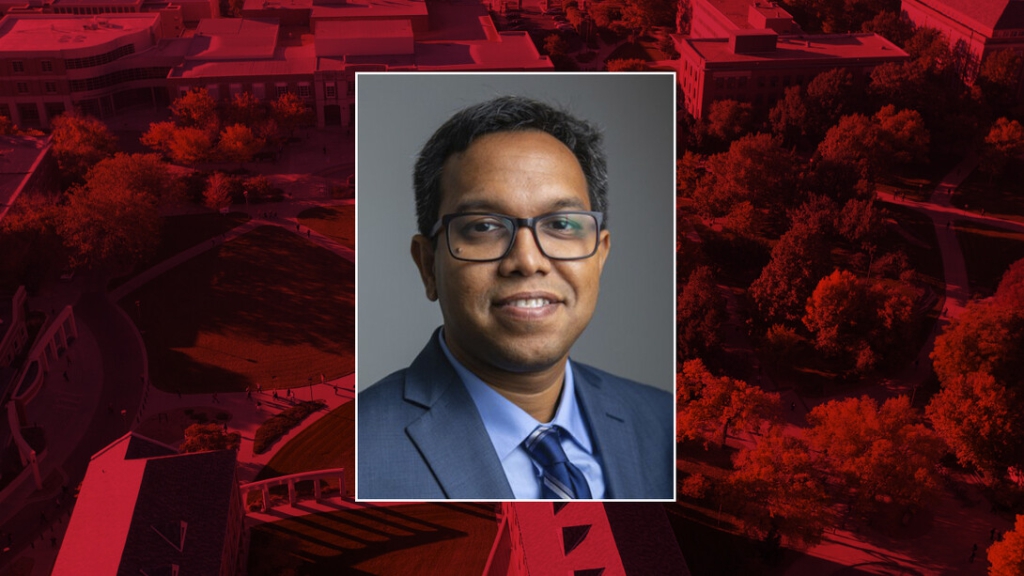Posted November 26, 2024 by Tiffany Lee
In case you missed these stories highlighting research and creative activity at the University of Nebraska-Lincoln, the Office of Research and Innovation’s communications team has compiled a roundup of some top research stories from research.unl.edu and other sources.

Nebraska U earns record number of NSF early-career honors
Who: Early-career Husker faculty
What: A record nine Nebraska researchers earned National Science Foundation Faculty Early Career Development Program awards in 2024, placing the university among the nation’s most successful institutions in earning awards through one of the most prestigious grant programs for rising scholars. According to data from the National Center for Education Statistics, Nebraska is one of 25 academic institutions to receive nine or more CAREER awards in 2024. Programs offered by the Office of Research and Innovation, including the CAREER Club and the Research Development Fellows Program, have contributed to Nebraska’s track record of success.
“Our vision for CAREER Club is bigger than winning CAREER awards — by supporting faculty in the early stages of their careers, we are helping to shape the leaders of our university’s future research initiatives as well as the extraordinary impacts their research will have on the broader community,” said Tisha Gilreath Mullen, director of proposal development in R&I.
Writers: Ashley Washburn and Tiffany Lee, Office of Research and Innovation

New device would help those with chronic conditions get timely treatment
Who: Eric Markvicka, Robert F. and Myrna L. Krohn Assistant Professor of Biomedical Engineering; Stephen Rennard and Ran Dai, University of Nebraska Medical Center; Kate Cooper, University of Nebraska at Omaha; Jenna Yentes, Texas A&M University
What: Markvicka’s team is using a $1.2 million grant from the National Institutes of Health to develop a wearable device that can detect acute exacerbations of chronic conditions like chronic obstructive pulmonary disease, asthma, heart disease and other inflammatory disorders. The device would measure multiple physiological parameters, enabling faster and more accurate detection of flare-ups. By time-stamping multiple streams of data, the device will illuminate how various physiological functions are linked – and how variations in these couplings may mark a change in health status. Eventually, the technology may help everyday people monitor their health and attune to early warning signs of illness.
“The goal is to create a wearable device for these patients that can be used as a medical diagnostic to detect acute exacerbations in a timelier manner: over the timespan of hours, as compared to days,” Markvicka said.
Writer: Tiffany Lee, Office of Research and Innovation

Woody’s research highlights humanity of making music
Who: Robert Woody, Steinhart Foundation Distinguished Professor of Music
What: Woody, an international leader in the psychology of music, was recently recognized on the Stanford/Elsevier Top 2% Scientists List, a comprehensive analysis of all peer-reviewed papers across scientific disciplines that measures the significance of the research. Woody is one of 180 Huskers on the list, and, among the tens of thousands on the list overall, he is among only 78 music researchers to make the cut. Woody’s research encompasses learning, motivation, emotional expression, creativity and leadership as they relate to music. Woody also leads the music education area at Nebraska and uses his research to inform strategies for educating the next generation of music teachers.
“By making kids more musical, we are enriching their lives in a real, meaningful way,” he said. “I’m fortunate to be in a field like music education and music psychology that can be really, really powerful.”
Writer: Kristina Jackson, University Communication and Marketing

Husker-led project aims to reduce rural childhood obesity
Who: Dipti Dev, associate professor of child, youth and family studies and Nebraska Extension specialist
What: Dev is leading a $3.2 million project funded by the National Institutes of Health aimed at helping rural child care programs foster healthy eating habits among young children through responsive feeding practices. Many rural families use in-home child care settings because of their flexibility. Rural children are also 26% more likely to experience obesity than their urban peers. To combat this, Dev will tap into the EAT (Ecological Approach To) for Prevention, an online rural community engagement program that introduces rural child care providers to strategies like encouraging children to self-regulate their food intake and make conscious choices about eating. Dev’s team will test the program in randomized trials with 3- to 5-year-old children attending rural, home-based child care.
“I envision Nebraska leading the way in this area, advancing best practices in responsive feeding to create healthier futures for rural children across the nation,” Dev said.
Writer: Chuck Green, Nebraska Center for Research on Children, Youth, Families and Schools

Pitt using CAREER award to develop communication tools for children
Who: Kevin Pitt, assistant professor of special education and communication disorders
What: Pitt is using a $585,000 award from the National Science Foundation’s CAREER program to reimagine how brain-computer interface, or BCI, communication devices can best help children with severe disabilities. BCI creates a direct link between the brain’s electrical activity and an external device, which allows users to control a device and communicate with their thoughts. Many existing BCI devices require users to touch a screen or look at letters and words – abilities that some children lack. With Pitt’s tool, children would view real-life pictures rather than letters. Pitt’s team will also allow study participants to create their ideal screen display, laying the groundwork for a tool based on children’s preferences.
“We’re really looking at what the brain signal does, and what kids prefer,” Pitt said. “We want to observe how the brain signal changes when we use real-life pictures and highlight items on the screen the way children prefer versus ways that we think they want.”
Writer: Chuck Green, Nebraska Center for Research on Children, Youth, Families and Schools

Aich adds expertise to project developing PFAS detection, remediation process
Who: Nirupam Aich, Richard L. McNeel Associate Professor in civil and environmental engineering; collaborators at Clarkson University and other institutions
What: Aich is adding expertise to a nearly $1.5 million grant from the U.S. Environmental Protection Agency aimed at developing the first field-ready process that both monitors and removes “forever chemicals” from water sources. Clarkson University leads the project, which represents one of the first EPA grants focused on simultaneously monitoring and destroying these chemicals, which include PFAS (per- and polyfluoroalkyl substances). PFAS, which leach out of everyday products and contaminate water, soil and living organisms, are linked to human health issues. Aich’s team will integrate PFAS-degrading nanomaterials into the new system. The long-term goal is to develop new technology that enables small municipal water systems to affordably monitor and remove PFAS from water.
“This will be the first field-ready process that can determine the level of PFAS contamination in wastewater or groundwater and, at the same time, evaluate the effectiveness of remediation technology,” Aich said.
Writer: Karl Vogel, College of Engineering

UNL commits $5 million to better measure environmental impact of cattle
Who: Galen Erickson, Nebraska Cattle Industry Professor of animal science and leader of the Beef Innovation Hub at Nebraska
What: With a $5 million grant from the university’s Grand Challenges initiative, Erickson is leading an interdisciplinary team aiming to establish resilient, climate-smart beef production systems that are effective across diverse management practices, soil types, weather conditions, forage types and more. The team will develop technology to accurately measure greenhouse gas emissions from grazing cattle. To this point, the cow-calf sector has been largely ignored in studies surrounding greenhouse gas emissions, partly because of the complexity of the grazing systems that produce beef. To fill this gap, Erickson’s team will use satellite, airborne and on-the-ground remote sensing to measure how greenhouse gas levels vary when cattle are in an area.
“We have the expertise, the track record, and we’ve already done many of these methods, just not in a collaborative way,” Erickson said. “The science is accepted, but we’re applying unique science in ways it hasn’t been used before. It’s advanced science, but it’s well accepted in the research community.”
Writer: Maria Tibbetts, Institute of Agriculture and Natural Resources





